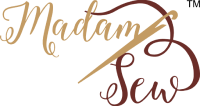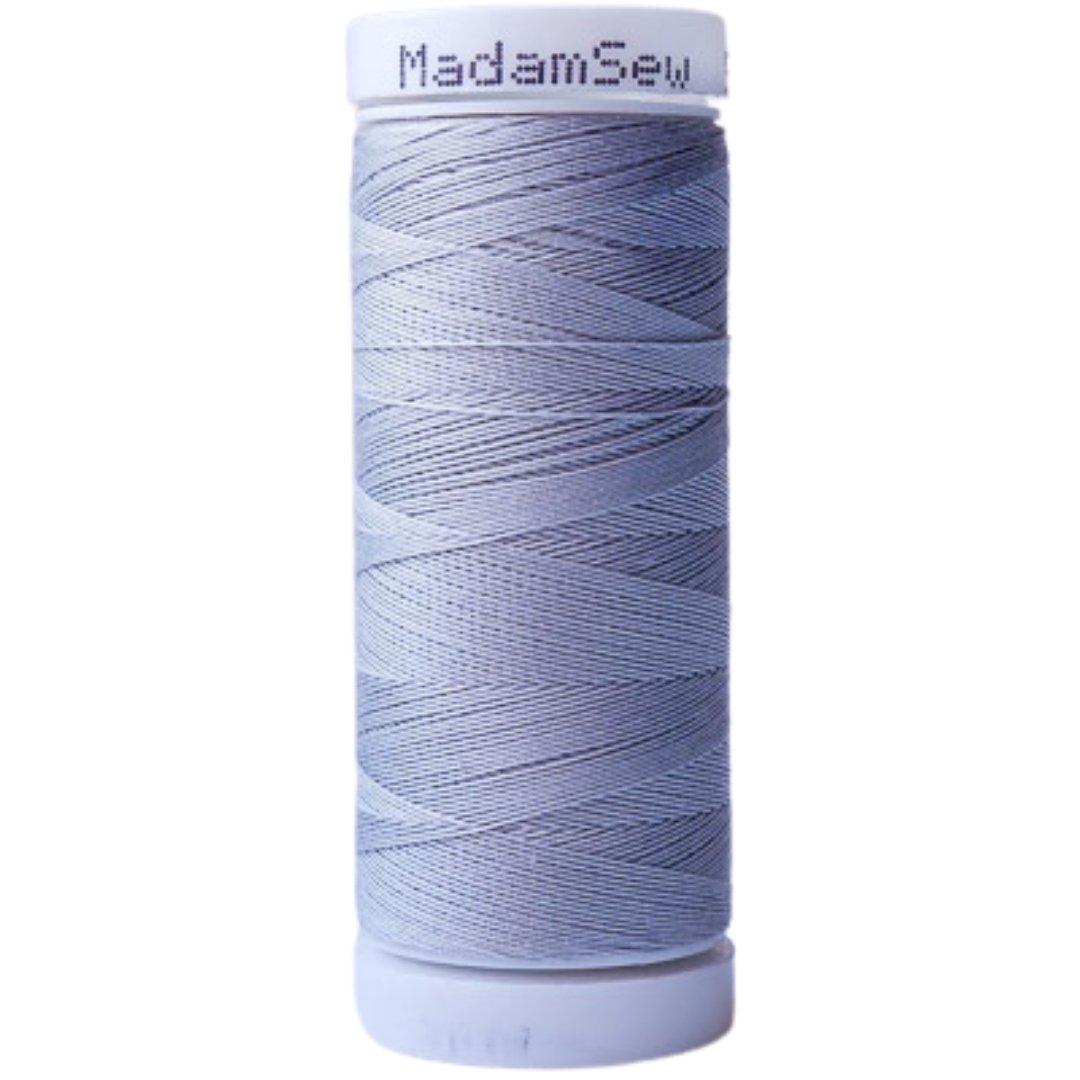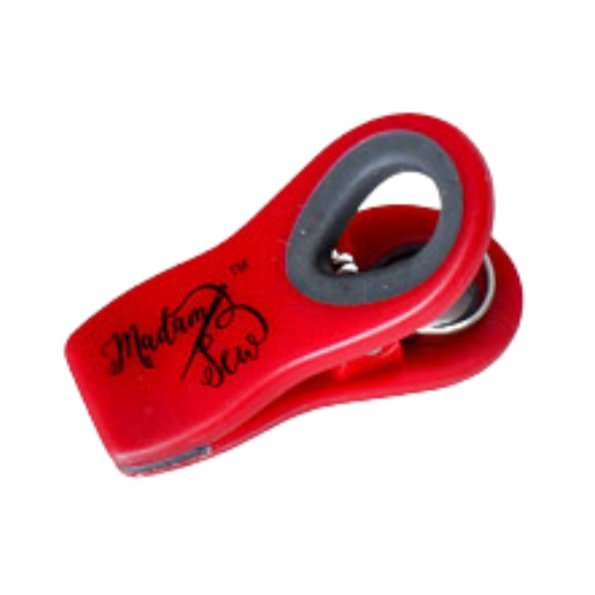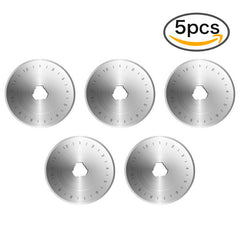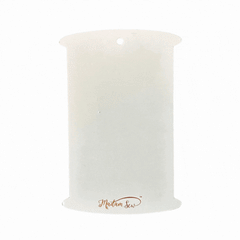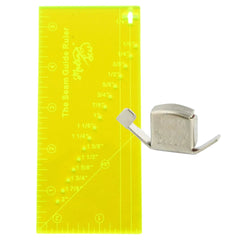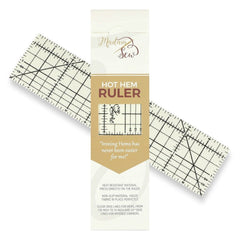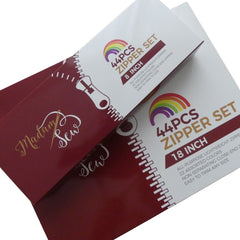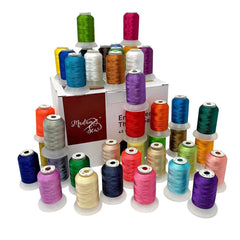10 FAQ ABOUT BIAS TAPE
Bias Tape 101: Your Complete Guide to This Essential Sewing Notion
If you've ever admired the neat, professional edge on a quilt or wondered how to finish a neckline without a facing, bias tape is likely the answer. This humble strip of fabric is one of the most versatile notions in any sewist's toolkit, yet it can seem mysterious to beginners.
Whether you're eyeing colorful packages at the fabric store or considering making your own, understanding bias tape will unlock many finishing techniques for your projects, from binding raw edges to creating decorative trim.
In this comprehensive guide, I'm answering the 10 most common questions about bias tape. I’m covering everything from what makes it different from regular fabric strips to how to choose the right width for your project. You'll learn when to buy pre-made tape versus making your own, which fabrics work best, and how to avoid common application mistakes.
By the end of this post, you'll understand not just what bias tape is, but why it works the way it does and how to use it confidently in your sewing projects.
Let's dive in!
1. What is Bias Tape?
Bias tape is a long strip of woven fabric pre-pressed in a way so the raw edges are hidden on the wrong side. On the right side, both edges of the strip have a fold on the long edges. On the wrong side you can see the raw edges meeting in the middle.
Bias tape stretches a little because the fabric used for this tape is cut at a 45 degree angle to the lengthwise and crosswise grain. The diagonal grain of the fabric is the bias of the fabric. That is where these strips get their name from.
Variations of Bias Tape
Bias tape comes in different widths, from ¼ inch to 3 inches. You can buy bias tape in a store or make it yourself. Sometimes the raw edges in the middle are close to each other, sometimes they are further apart.
You can also find bias tape made out of different fabric types: cotton, satin or even stretch fabrics like lycra for bathing suits for example. They exist in solid colors, prints, plaids, stripes, metallics,...
Bias tape can be folded and pressed in half lengthwise, this is called “double-fold” bias tape. When you look at double-fold tape, you'll see a clear crease down the middle where it's been pressed in half. This center fold creates two slightly different widths: one side is marginally narrower than the other, which helps ensure the binding catches properly when you stitch from the front. Because it can wrap completely around the raw edge, it provides protection against fraying and it creates a finished look that's identical on both sides. The enclosed construction also means it can handle more wear and washing than other edge finishes.
Bias tape that does not come pressed in half is “single-fold” bias tape. It's typically half as wide as double-fold when applied, because you only see one layer on the edge instead of two. You generally use it like a facing or binding where you want a clean edge without a bulky border.
2. What Do You Use Bias Tape For?
Bias tape is used to make piping, to bind seams, to finish raw edges, to make a facing. You can see bias tape on the edge of a quilt, of a placemat, pot holders, bibs and other baby items, on pillow cases. You can also finish neckline edges with bias tape or use it for straps for clothing or bags. It serves both functional and decorative purposes:
Functional:
- Encasing raw edges on seams for a polished finish
- Binding quilt edges
- Finishing necklines and armholes
- Creating casings for drawstrings
- Creating straps for aprons, bags, or dresses
- Reinforcing stress points on projects like bags or weather resistant finishings
Decorative:
- Adding contrasting trim to garments or home décor items
- Outlining appliqué shapes
- Making piping for upholstery projects
Double and single fold bias tape are used differently in projects.
Double fold bias tape is most commonly used as an edge finish and to add some color to a project. It is great for encasing a raw edge or for binding thicker layers. You can see bias tape on the edge of a quilt, on a placemat, on bibs, aprons, …
Single fold bias tape is often used as a flat trim band, decorative or functional. It can be sewn down with a straight or a decorative stitch. Wider varieties of single fold bias tape can be used as a hem, armhole or neckline facing.
3. Why Do You Have to Cut the Strips “on the Bias”?
Cutting strips on the bias means that you cut on a 45-degree angle across the weave of the fabric. If you don’t cut the fabric on the bias, the tape will be less elastic. When you cut fabric strips (like quilt cotton for example) on the grain, that is parallel to the edges, it doesn’t stretch. This elasticity is an essential quality of bias tape. Fabric cut on the bias has a better drape and can be attached more easily around corners and to curved edges. A straight-grain strip folded like bias tape will not curve without kinks and warping.
Think of it this way: try bending a ruler around a curve versus bending a rubber band. The bias-cut strip behaves like the rubber band, stretching and conforming smoothly to whatever shape you need it to follow. This flexibility is crucial when binding curved necklines, armholes, or the rounded corners of quilts.
4. How Do You Make Bias Tape?
If you are looking for step-by-step instructions on how to make bias tape, check out the tutorial with video that I’ve written some time ago. What is below is the short and quick version.
a. What tools do you need to make bias tape?
-
- To measure and mark: a ruler and erasable fabric marker
- To cut: A rotary cutter and mat or just fabric scissors
- To iron: a bias tape maker, a hot hem ruler or glass head pins and patience plus accurate ironing
b. How to cut fabric for bias tape?
Fold a piece of fabric in a big square. Fold it in half diagonally and cut the fold so you get two big triangles. Measure and mark lines parallel to the long diagonal side you just cut and cut the strips. If you want to learn an efficient way to cut bias tape, check out Ana’s video about fast bias tape cutting.
c. How do you make continuous bias tape?
The best way to join strips for bias tape is to do it before you start ironing. You place the strips you want to join in a 90 degree angle, overlapping completely, so not just the tip. Right sides are facing each other. The marked line in the image below is where you put the stitches to attach the two ends. After sewing, you cut off the excess fabric, press open the seams and cut off the little dog ears. Check out the second half of Ana’s video to learn how to do this.
d. How to iron the edges of bias tape?
There are different ways of making bias tape. You can just mark and fold and iron the edges. Without any extra tools this will take some time and maybe finger burning. Ironing seams goes faster with a heat resistant ruler like the hot hem ruler, but for bias tape, the best invention is bias tape makers. In question 6 below, I explain how these little ironing tools make this step so much easier.
e. How to store bias tape?
If you buy ready made packs of bias tape, you will always have extra that you will need to store. When you make the bias yourself, you can make the tape you need for your project or make a lot at once and store it. We added these cardboard bobbins to our collection of storing solutions. They are perfect for bias tape. Just so you know 🙂
5. What Width of Bias Tape Do You Need?
Standard double fold bias tape is ⅜ - ½ inch wide. Single fold this is ¾ inch to 1 inch wide. These are the widths that you find in stores easily. When people talk about bias tape width it is never the full width of the strip. Always check if they are referring to the single fold or double fold width. The strip might be single folded in the packaging and still say ½ inch double fold. Remember that double-fold bias tape appears half as wide when applied on your project since it wraps around the edge.
A general rule of thumb is: Decide how wide you want your binding edge to be (so seen from one side), multiply this by 4 and reduce this with ¼ inch. This rule is widely used for binding and the starting point is the double folded width.
-
Example: 1/2-inch finished binding = 1 3/4-inch cutting width
But, in the end the width depends entirely on your intended use and personal preference.
Common double folded bias tape widths with their uses:
- 1/4-inch finished width: Delicate lingerie, doll clothes
- 1/2-inch finished width: Standard quilt binding, lightweight garments
- 3/4-inch finished width: Heavier quilts, bags, home décor items
- 1-inch finished width: Bold decorative binding, thick layers
6. What does a Bias Tape Maker do?
A bias tape maker is a little tool that exists in multiple sizes. It helps ironing the folded edges consistently and fast without marking or pinning. You just pull the tape through the tool - make sure you use the right size of tape for the corresponding bias tape maker - and iron on the tape. The folds are where they should be.
A quality bias tape maker set can transform this sometimes tedious process into an efficient part of your sewing routine. The consistent results and time savings quickly justify the investment for any sewist who regularly works with bias tape.
This table shows the widths you need to cut, the corresponding bias tape makers, and the width of single and double fold bias tape you get. All of the sizes and colors in the table are in the Madam Sew Deluxe Bias Tape Maker Set.
7. Why Make Your Own Bias Tape If You Can Buy it in a Store?
Pre-packaged bias tape only has so many options. Finding a plain color in one of the standard widths is easy. But, to get a strip in the width and color or shade you want, one that matches your project perfectly, you’re better off making it yourself.
Advantages of homemade bias tape:
- Perfect color matching with your project fabric
- Custom widths for specific applications
- Better fabric quality control
- Cost savings on large projects
- Creative possibilities with patterned fabrics
- Exact quantities needed
When to buy pre-made:
- Standard colors and widths work for your project
- Time constraints don't allow for making your own
- You bumped into a good deal 🙂
8. What Fabrics Work Best for Bias Tape?
Not all fabrics are suitable for bias tape. Quilting cotton is a good fabric to use as a standard. It is easy to work with, has the right weight, presses well. It has enough body without being too stiff. You can also use softer fabric like chambray or lightweight cotton. If you need bias tape for lightweight garments or fine fabric, you can use cotton lawn. It is smooth and folds crispy. Linen and linen blends are beautiful but are more prone to fraying, making them a little harder to work with.
I would avoid stretchy, slippery, and thick fabrics or fabrics that are too loosely woven. Jerseys won’t hold their shape well. Canvas or denim will be hard to fold and use with a bias tape maker. Loosely woven fabrics fray a lot when cut on the bias and slippery synthetics won’t press easily and will shift when you’re sewing. The key is finding that sweet spot: a fabric with enough structure to hold a crease but enough drape to wrap smoothly around edges and curves.
Match your bias tape weight to your project fabric. Lightweight bias tape on heavy fabric won't provide adequate stability, while heavy bias tape on delicate fabric will overpower the design.
9. How Do You Apply Bias Tape?
Application method depends on the type of bias tape and your project. Most tutorials and patterns will guide you through the different phases step by step that are best suited for the project.
Adding bias tape to an edge can be done with the four basic steps below. That edge that can be made up out of multiple layers of fabric.
1. Open the bias tape and align one folded edge with your fabrics edge using pins or clips
2. Stitch in the first fold line.
3. Wrap the tape around to the back using pins or clips.
4. Topstitch from the front, catching the back fold in your stitching
Sometimes you can do it in two steps, if you can wrap and pin the tape around the edge and just do the topstitching, catching all layers. It is risky, but it can be done!
On some projects you might want to encase the raw edges of a seam separately and use a bias bound seam.
Using a bias binding presser foot, makes it possible to do it in one step. The bias tape is guided under the foot wrapping it around your edge and stitching it down. This won’t work for every project and it is a tool that needs a bit of practice but if you are curious, I would recommend reading this blogpost from Ana where she successfully uses the bias binder foot for binding a quilt.
Some tips:
- Pre-shape bias tape around curves using steam
- Use a lot of pins on curved seams
- Use clips instead of pins on thick layers
- Always test stitch length and tension on scraps first
10. What Are Common Bias Tape Mistakes and How Do You Fix Them?
Wavy binding: Usually caused by stretching the bias tape during application. Solution: Keep tension consistent and let the bias tape's natural stretch do the work.
Puckered corners: Occurs when bias tape is forced around sharp corners. Solution: Create small pleats or ease the tape gradually around curves.
Uneven width: Results from inconsistent cutting or folding. Solution: Use a bias tape maker for uniform results, and take your time during the cutting phase.
Visible raw edges: Happens when the bias tape isn't wide enough or isn't properly centered. Solution: Always test fit before final stitching.
Bulky joins: Caused by improper strip joining techniques. Solution: Always join strips at 45-degree angles and trim excess seam allowances.
Understanding bias tape opens up more possibilities in your sewing projects. Whether you're binding a quilt, adding decorative trim to a garment, or finishing raw edges on a home décor project, the right bias tape can add that extra touch.
The key to bias tape success lies in understanding its unique properties and choosing the right application for each project. With practice, you'll develop an intuitive sense for when to use what bias tape, how to achieve smooth curves, and when making your own bias tape is worth the extra effort.
What's your biggest bias tape challenge? Have you discovered any clever tricks for working with this versatile notion? Share your experiences in the comments below.
If you are looking for projects to try using bias tape, you can try:
Ready for a bigger challenge? Try this curvy quilt binding technique.
Happy sewing!
An
Blogging for MadamSew
Download Free Bias Tape FAQ Here
